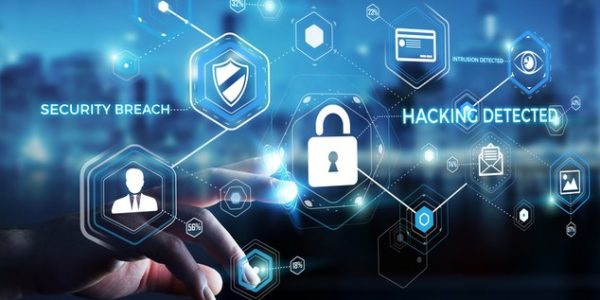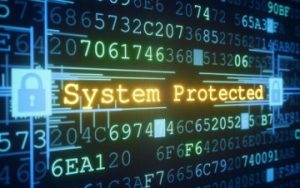Cyber Security for Business
Cyber security is one of the most important measures your organization should make as a priority. Cyber attacks and unauthorized intrusions are ever evolving and escalating at lightning speed. The statistics on data breaches are staggering, and increasing in severity as well. There are several factors to consider when a business is hacked. Number one is the cost associated with these crimes. It is crucial to understand the general landscape of metrics surrounding the host of cyber security issues, such as malware, viruses, ransomware, etc., and what it can cost your business.
Did you know employees are the weakest link in network security and can create the greatest cyber security risks? With new threats emerging every day, making company-wide changes, improving overall security behavior and training your employees in cyber security, it is possible to protect your company from most cyber attacks.

Understanding modern cyber security attacks
The best defense against any threat is information. When you understand the threats posed by cyber criminals, you can figure out the best way to protect your most valuable data. Some cyber threats are well known, like viruses and malware. Other cyber threats are more modern, like phishing and ransomware attacks. The following information was prepared to help you better understand the most potentially devastating attacks being used by today’s cyber criminals.
Phishing scams are used by cyber criminals hoping to gain access to passwords, credit card information and usernames. Disguising a communication as trustworthy, they coerce users into following a link or answering an email that results in a security breach. Phishing scams can be quite convincing, so educating personnel in how to avoid them is a sound, preventative measure. We can also use spam detection software, data encryption and secure connections to further protect you from a cyber attack.
Spear phishing is similar to phishing, but it usually targets a single business or specific user. Email or some other form of correspondence motivates a user response that is routed directly to the cyber criminal. Spear phishing attacks are often very sophisticated and may even be government-sponsored. For this reason, users must be able to identify threats, and infrastructure must be ready to respond to a breach so it can be contained.
Spoofing is a scam used by cyber criminals designed to coerce them into giving away important data willingly. Attacks may come in the form of a disguised email. It may look perfectly realistic, but closer inspection often reveals visible flaws. There are a number of ways to protect users from spoofing scams, including education and spam detection software.
CEO fraud is a scam where cyber criminals impersonate an executive. Targeting a specific employee, they seek to coerce them into revealing tax information, credit card information or making an unauthorized wire transfer. The employee often receives the request in an email that includes routing information, so it can be difficult to detect if the user is unaware that these cyber threats exist. All of your accounting and human resource personnel should fully understand the nature of this cyber threat.
Ransomware is becoming more common, and a cyber attack can be devastating. When attacked, users are locked out of their device or the entire framework until a ransom is paid. Even if control of the device is regained, confidential information will likely be in the hands of the criminals that perpetuated the cyber attack. Opening a harmless looking email attachment or clicking a link in a seemingly reputable website can lead to a ransomware attack. Protection from these attacks must be approached from a comprehensive perspective.
Social engineering is an attack used by cyber criminals attempting to take over an entire computer system. They may use a variety of techniques to accomplish this goal, including phone contact, emails, postal service and even direct contact. We use a variety of security features to protect clients from these attacks, and help those who were unprepared to recover from one.
Tailgating is an attack that targets a specific user. Cyber criminals will monitor the day-to-day habits of an employee to find exploitable work patterns. If they do enough research, they may be able to trick an employee into revealing all sorts of sensitive data. This is yet another sophisticated cyber attack that demands a holistic approach.
There are other less common cyber attacks not listed here. Our cyber security professionals always stay abreast of the most modern attacks and monitor them as they evolve. This is one of the ways to protect your data and IT infrastructure from the pervasive threat of a cyber attack.
Architectures, prevention and management that maximizes cyber security
You should always use a firewall to protect you from malware but the wide range of threats demands a more comprehensive approach to security. Your business infrastructure is vulnerable in a variety of ways, so each demands attention. By developing multiple layers of protection, you can better prevent an attack and take swift action if a security breach occurs. In a way, your cyber security is like securing the company’s physical structure because the more secure it is, the less likely it is to suffer a successful attack.
Security architectures are the physical structures that protect you from an attack. These may be compared to the locks on your doors, but they are built into your computer hardware and software. We always recommend two-factor authentication (2FA) for clients to maximize protection. This may mean using a firewall that requires a code entry for users to gain access to the system. Other security architectures include Intrusion Detection and Intrusion Protection Systems, Secure Communication Protocols along with Encryption and Decryption devices.
Prevention is like your front line of defense. Think of it as leaving a light on by your company’s front door and ensuring the alarm system is set. Because most successful cyber attacks are caused by human error, successful prevention often revolves around education. We work with clients to develop security prevention protocols that involve device handling. We also implement technologies capable of detecting threats and some that circumvent human error. Prevention must evolve along with cyber threats, so you should always review your protocols and update them as necessary.
Management includes monitoring, reporting and reacting. Cyber attacks can happen at any time. The ability to monitor for, and identify, these threats often means the difference between a minor setback and a serious problem. Monitoring is like an active alarm on your business office. If a criminal breaks in, an alarm sounds and the police are immediately notified. Reporting makes it possible to identify vulnerabilities before they are exploited. Our cyber security team can help you interpret reporting data and then implement steps to ensure your data protection is maximized.
Understanding internal cyber security threats
Internal threats are a security risk that must be acknowledged. Keep in mind that most internal threats are actually external in nature. Savvy cyber criminals understand how to disguise themselves as insiders. They know that this is the most effective way to obtain login credentials, install malware, or steal proprietary data. If a cyber criminal obtains access to multiple access points, it can be difficult to remove the threat.
In these situations it’s paramount to contain the breach and ensure it remains localized. This is also true when a dishonest employee attempts to steal sensitive data for their own nefarious reasons. With the proper cyber security tools, you can identify the source of the breach and localize the damage.
Accomplishing these security goals requires multiple layers of defense. Our cyber security engineers will thoroughly review your protocols to identify vulnerabilities. Then we craft a comprehensive solution based on your unique needs.
Are you at risk of a cyber attack?
The short answer to this question is “yes.” Every business is at risk, but small businesses are especially at risk. In fact, more than 60% of cyber attacks target small businesses. If you read the news, then you already know that cyber criminal activity is at an all-time high, and there is no sign that it will slow down in the near future.
Contact us today
 A security breach could be far worse than you realize. Take steps to help protect your data, reputation and bottom line with our IT support professionals. We can assist you in developing a comprehensive security solution designed to aid in protecting your most sensitive data from the threat of cyber crime.
A security breach could be far worse than you realize. Take steps to help protect your data, reputation and bottom line with our IT support professionals. We can assist you in developing a comprehensive security solution designed to aid in protecting your most sensitive data from the threat of cyber crime.
Let us handle your cyber security needs while you focus on your bottom line. Technology should be working for you, not the other way around. We are ready to help.
